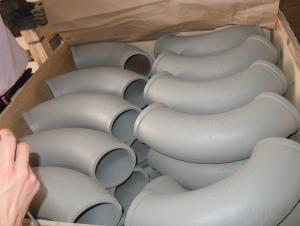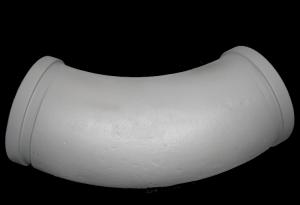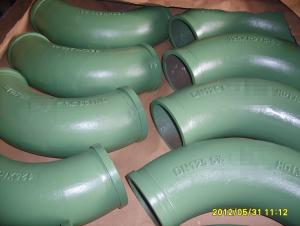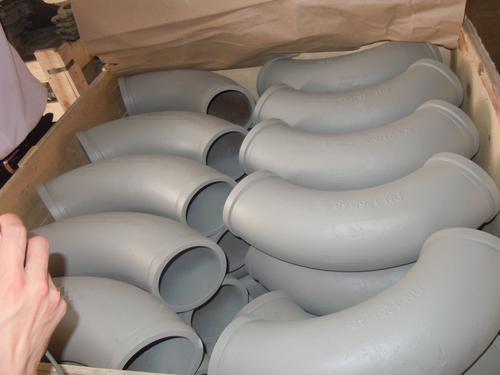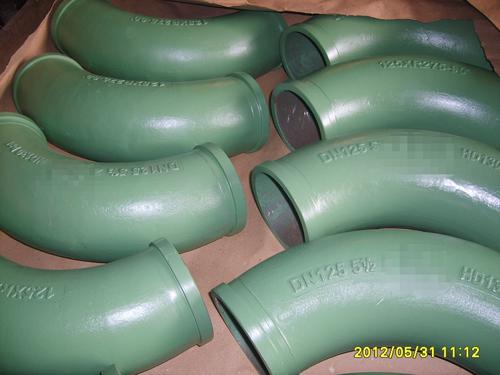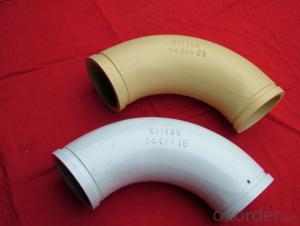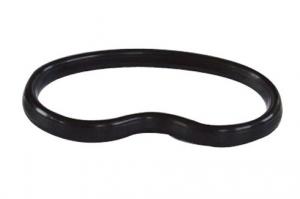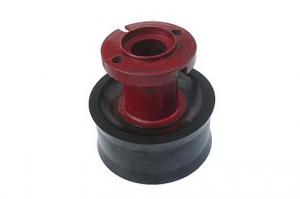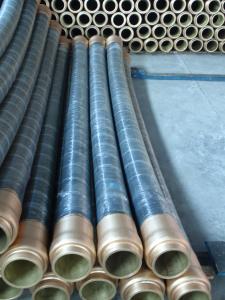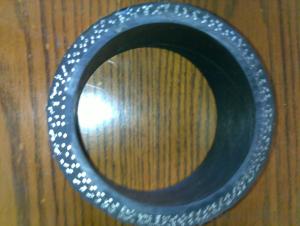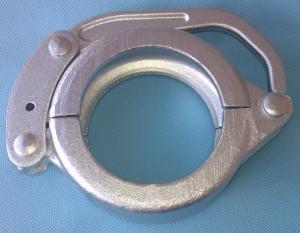Concrete Pump Truck Parts Elbow Bend R275 DN112 148Flange 90DGR Casting
- Loading Port:
- China Main Port
- Payment Terms:
- TT OR LC
- Min Order Qty:
- -
- Supply Capability:
- -
OKorder Service Pledge
OKorder Financial Service
You Might Also Like
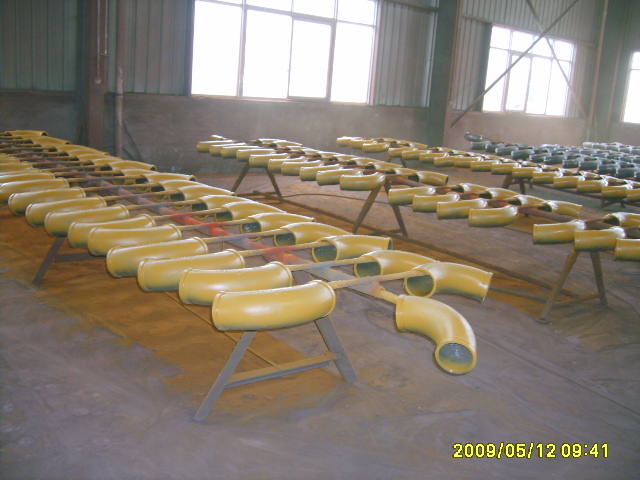
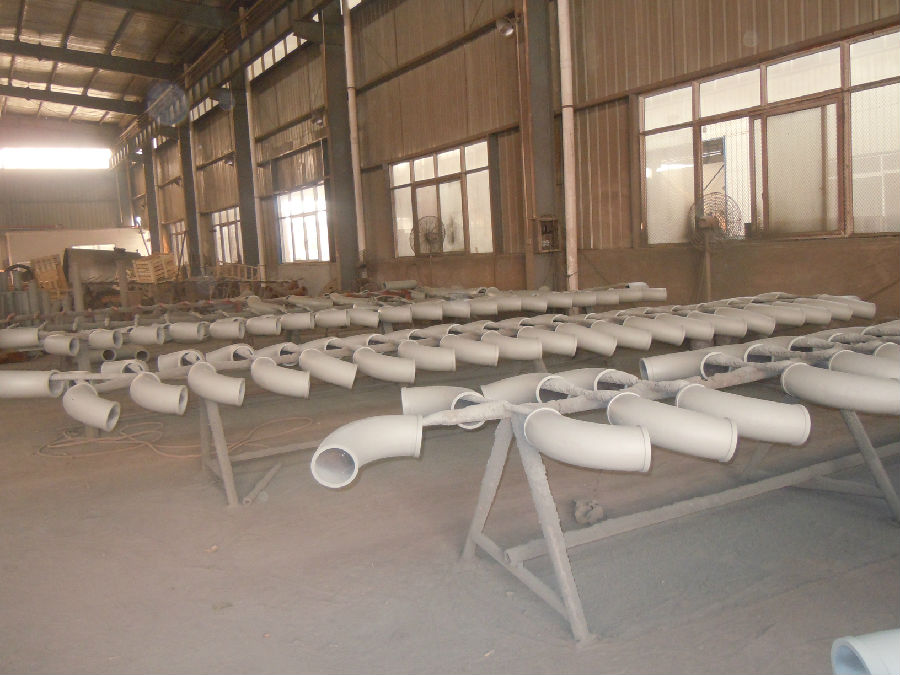
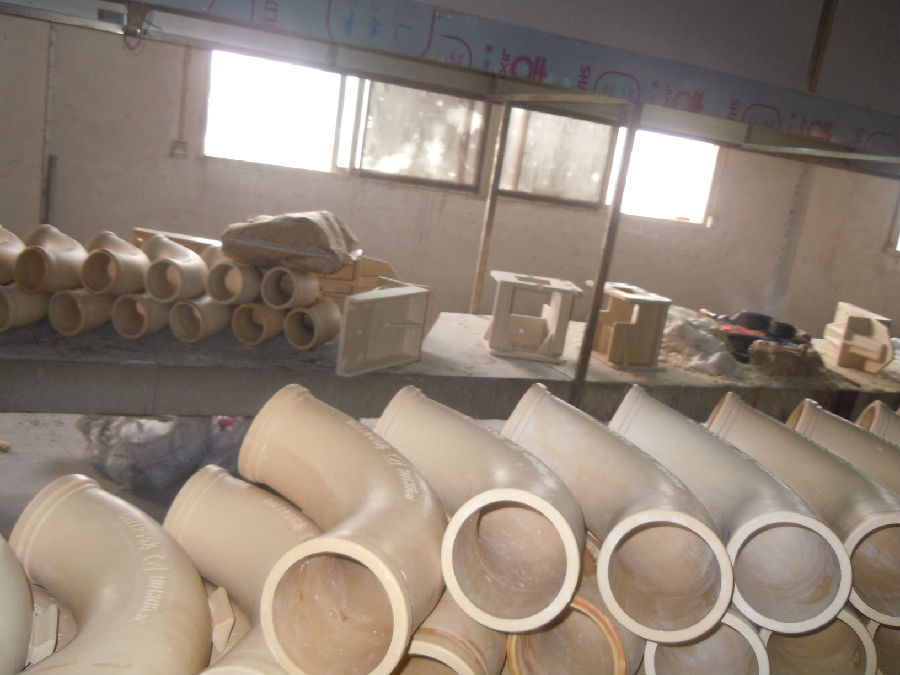
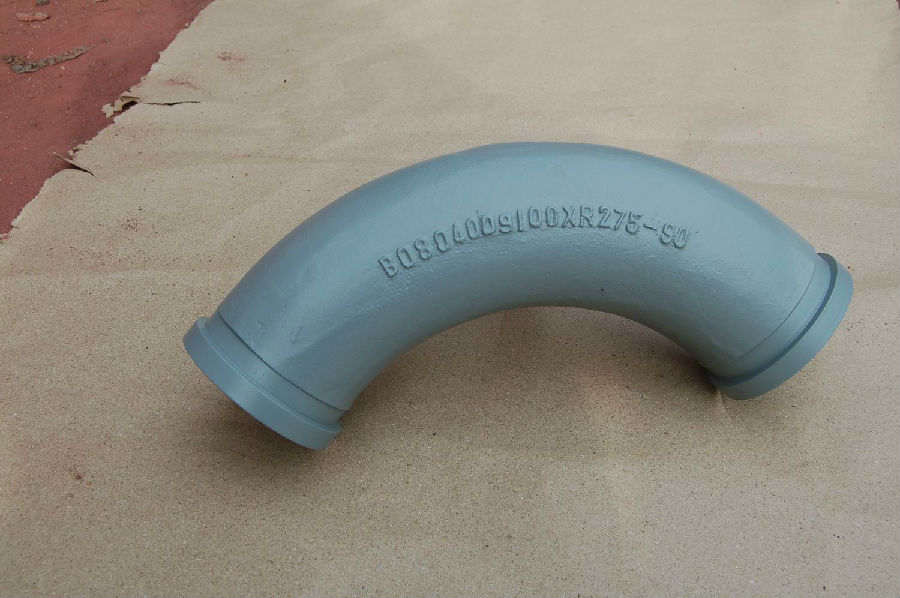
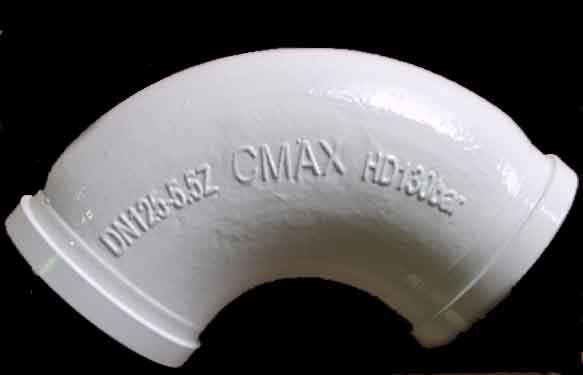
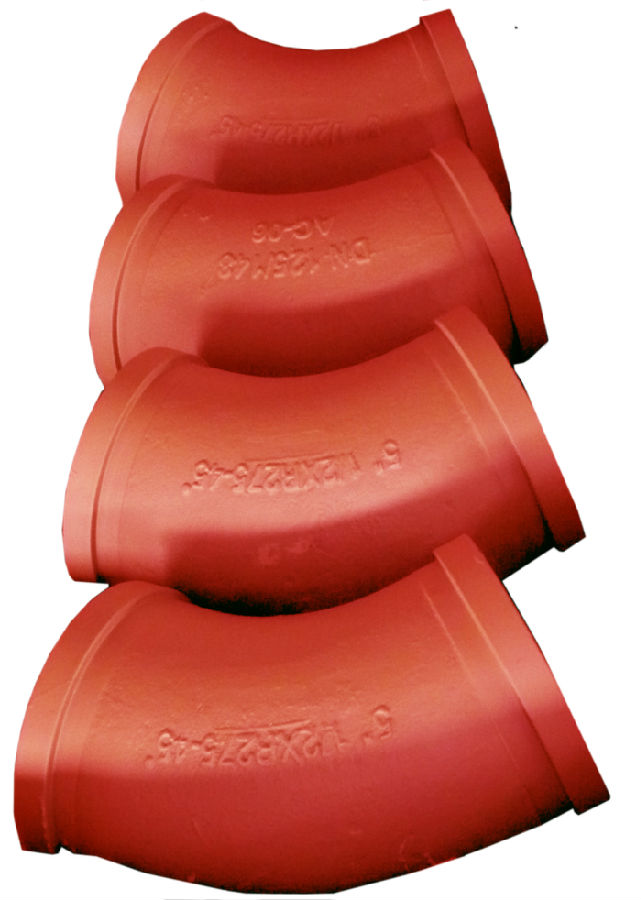
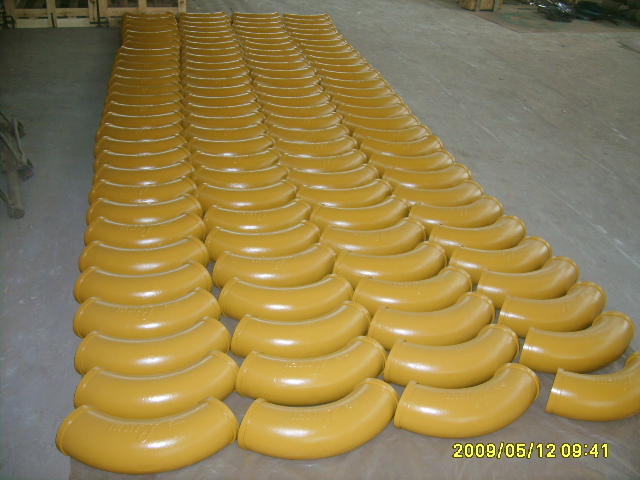
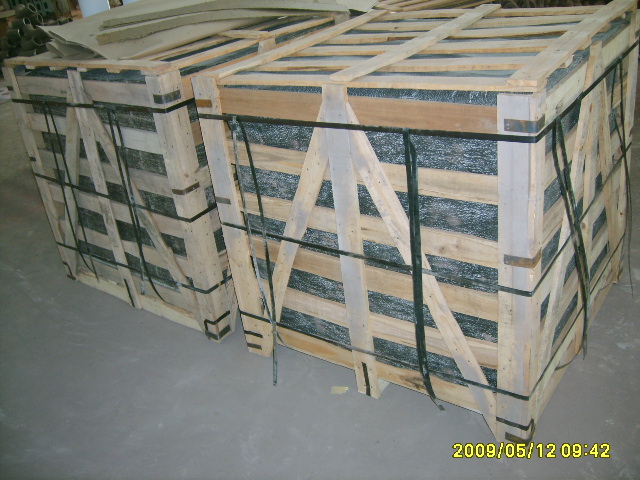
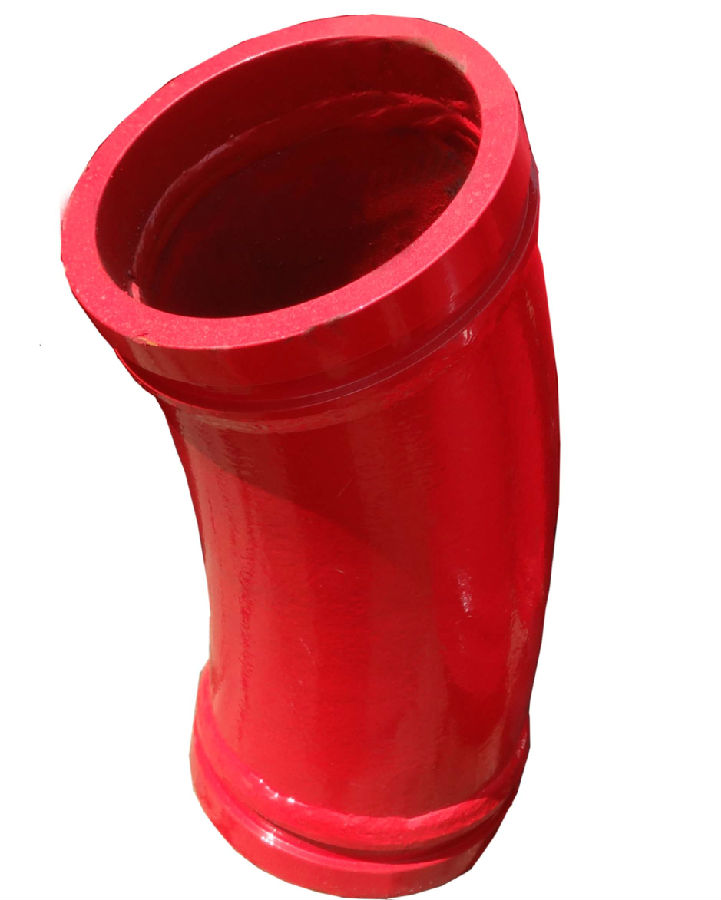
Product Description:
Product Name: Concrete Pump ELBOW DN100
1. Specification of Concrete Pump ELBOW DN100
Dimensions: DN112
Radius: 275mm
Flange: SK, ZX, F&M
Degree: 90
Material: #20 steel, ST52
Thickness: 4.5mm,6mm,7.1mm,7.5mm,10mm,
Working pressure: 180MPa
Notes: total series of concrete pump ELBOW for different brand concrete pump(PUTZMEISTER, SCHWING, CIFA, SANY, ZOOMLION, IHI, KYOKUTO Etc) available from us.
2. Application of Concrete Pump ELBOW DN112
Widely used on concrete pump truck, concrete placing boom, trailer concrete pump etc, for concrete delivery pipe connection.
Our concrete pump bends have been successfully exported to many countries from 1998, Our main markets as below: Middle East, Southeast Asia, America, Brazil, Italy, Russia, South Africa etc
Aiming at the largest concrete pump parts manufacturer, and reliable, professional supplier in China, we can supply concrete pump elbows, delivery pipes, casting or forging couplings, end rubber hoses, rubber pistons, tungsten wear plates, delivery cylinders, and other hydraulic parts, one stop service for your concrete pump parts and accessory business.
3. Package and Delivery of Concrete Pump ELBOW
Every 30pcs put in one seaworthy wooden box, and 20 boxes in one 20feet container.
- Q: What kind of concrete pump truck?
- There is also called ground pump, also called electric pump. Power is powered by electricity. There are tyres that can be towed to the workplace by tractors. The cost of operation is relatively low
- Q: How can one ensure proper functioning of concrete pump spare parts after installation?
- To guarantee the effective operation of concrete pump spare parts post-installation, several pivotal measures can be taken: 1. Quality Assurance: It is imperative to procure spare parts from reputable manufacturers or suppliers. Confirm that the spare parts are of superior quality, constructed from durable materials, and adhere to industry standards. This will significantly diminish the risk of malfunctioning components. 2. Proper Installation: It is crucial to adhere to the manufacturer's guidelines and recommendations regarding the installation of concrete pump spare parts. Each element should be installed accurately, with the appropriate torque and alignment. Seeking professional assistance if necessary is advisable to ensure proper installation. 3. Regular Maintenance: Consistent maintenance is vital for the effective operation of concrete pump spare parts. Establish a maintenance schedule and adhere to it diligently. This encompasses inspecting and cleaning the spare parts, checking for any indications of wear or damage, and lubricating moving parts as required. 4. Timely Replacement: Over time, concrete pump spare parts may deteriorate or sustain damage due to continuous usage. Monitoring the condition of the spare parts is crucial, and replacing them promptly when necessary is essential. Regularly inspecting the components and promptly replacing any worn-out or damaged parts will help maintain the proper functioning of the pump. 5. Training and Education: Ensuring that operators and maintenance personnel receive proper training and education is vital for the effective operation of concrete pump spare parts. They should be familiar with the equipment, its spare parts, and the correct procedures for installation and maintenance. Regular training sessions can enhance their knowledge and skills, resulting in better maintenance and performance of the spare parts. By adhering to these steps, one can ensure the proper functioning of concrete pump spare parts after installation, thereby enhancing the overall efficiency and longevity of the equipment.
- Q: Can concrete pump spare parts be painted or coated for increased durability?
- Concrete pump spare parts can achieve greater durability by undergoing painting or coating. This protective measure shields them from corrosion, wear, and other types of harm. Applying a layer of paint or coating enhances their resistance against harsh environmental conditions, chemicals, and moisture. Furthermore, certain paints or coatings can provide extra advantages like heat resistance or non-stick properties, further bolstering the spare parts' durability and performance. It is crucial to utilize appropriate paints or coatings that are specifically formulated for the materials and conditions the spare parts will encounter, guaranteeing optimal adhesion and longevity.
- Q: What are the indications of a damaged concrete pump boom?
- There are several indications that can point to a damaged concrete pump boom. These indications can include: 1. Visual damage: One of the most obvious signs of a damaged concrete pump boom is visible physical damage. This can include cracks, dents, or deformities in the boom structure. Any signs of structural damage should be taken seriously as they can compromise the integrity of the boom. 2. Leaks: Another indication of a damaged boom is the presence of leaks. If you notice hydraulic fluid or water leaking from the boom, it could be a sign of a damaged hose or fitting. Leaks can not only affect the performance of the pump but also pose a safety risk to the operator and those working around the equipment. 3. Misalignment: A damaged boom may also exhibit misalignment issues. If the boom is not straight or appears to be bent at an odd angle, it could indicate damage. Misalignment can affect the accuracy and efficiency of concrete placement, potentially leading to uneven or improper pouring. 4. Unusual noises: Strange or excessive noises during operation can be a sign of a damaged boom. Rattling, grinding, or squealing sounds can indicate loose or worn-out components, such as pins, bushings, or bearings. These noises should not be ignored, as they could worsen if not addressed promptly. 5. Reduced performance: A damaged boom may also result in reduced performance. If you notice a decrease in pumping capacity or difficulties in controlling the boom's movement, it could be an indication of damage. Poor performance can be caused by various issues, including hydraulic system problems, structural damage, or worn-out parts. In conclusion, it is crucial to regularly inspect and maintain concrete pump booms to identify any indications of damage. Promptly addressing these issues is essential to ensure the safety of operators, prevent further damage, and maintain the efficiency and performance of the equipment.
- Q: How can a malfunctioning hydraulic motor affect the pumping process?
- A malfunctioning hydraulic motor can have various negative effects on the pumping process. Firstly, it can result in a decrease in pumping efficiency. The hydraulic motor is responsible for converting the hydraulic energy into mechanical energy, which drives the pumping mechanism. If the motor is malfunctioning, it may not be able to generate enough power to operate the pumping system effectively, leading to a decrease in the volume or pressure of the pumped fluid. Additionally, a malfunctioning hydraulic motor can cause an increase in energy consumption. Inefficient or faulty motor operation can lead to higher energy requirements to maintain the desired pumping rate. This increased energy consumption can result in higher operating costs and reduced overall system performance. Furthermore, a malfunctioning hydraulic motor can lead to irregular pumping or complete pump failure. If the motor is not functioning properly, it may result in intermittent or inconsistent pumping, causing fluctuations in the flow rate or pressure of the pumped fluid. In extreme cases, the motor may completely stop working, leading to a total loss of pumping functionality. Moreover, a malfunctioning hydraulic motor can cause increased wear and tear on the entire pumping system. The motor's improper operation can create excessive vibration or heat, leading to premature failure of other components such as seals, bearings, or pistons. This can result in frequent maintenance or repair requirements, leading to increased downtime and costs. In summary, a malfunctioning hydraulic motor can have significant negative impacts on the pumping process, including decreased efficiency, increased energy consumption, irregular pumping or complete pump failure, and increased wear and tear on the system. It is crucial to regularly inspect and maintain hydraulic motors to ensure their proper functioning and avoid potential issues that may disrupt the pumping process.
- Q: How often should hopper agitator shaft bearings be inspected or replaced in a concrete pump?
- The frequency at which hopper agitator shaft bearings in a concrete pump need to be inspected or replaced can vary depending on several factors. These factors include the recommendations from the manufacturer, the operating conditions, and the maintenance history of the pump. However, as a general rule, it is advisable to inspect these bearings at least once a year or every 500-1000 hours of operation, whichever comes first. During regular inspections, it is crucial to check for any indications of wear, damage, or excessive movement in the bearings. If any abnormalities are identified during the inspection, immediate action should be taken to address the problem. In some instances, lubrication or adjustment might be enough to rectify minor issues, whereas more significant damage or wear may necessitate replacing the bearings. It is essential to recognize the vital role that hopper agitator shaft bearings play in ensuring the smooth and efficient functioning of the concrete pump. Neglecting regular inspections or delaying necessary replacements can result in increased downtime, reduced productivity, and potential safety risks. Therefore, it is recommended to adhere to the manufacturer's guidelines and seek advice from experienced technicians or specialists for a more precise evaluation of the specific intervals for inspection and replacement in your concrete pump.
- Q: What is the function of a concrete pump hopper filter?
- The function of a concrete pump hopper filter is to prevent large debris and foreign objects from entering the pump system, ensuring smooth and uninterrupted flow of concrete and protecting the pump from potential damage.
- Q: How often should the concrete pump cylinder be replaced?
- The concrete pump cylinder should be replaced when it shows signs of wear and tear or if it becomes damaged. The frequency of replacement can vary depending on factors such as usage, maintenance, and quality of materials used. Regular inspections and proper maintenance can help prolong the lifespan of the cylinder.
- Q: How long do rubber pistons typically last in a concrete pump?
- Rubber pistons in a concrete pump typically last for several thousand pumping hours before they need to be replaced. However, the lifespan can vary depending on factors such as the quality of the rubber, the intensity of use, and the maintenance practices followed.
- Q: What is the function of a concrete pump remote control antenna?
- The function of a concrete pump remote control antenna is to wirelessly transmit signals from the remote control device to the concrete pump, allowing the operator to control the pump's functions from a distance.
Send your message to us
Concrete Pump Truck Parts Elbow Bend R275 DN112 148Flange 90DGR Casting
- Loading Port:
- China Main Port
- Payment Terms:
- TT OR LC
- Min Order Qty:
- -
- Supply Capability:
- -
OKorder Service Pledge
OKorder Financial Service
Similar products
Hot products
Hot Searches
Related keywords
